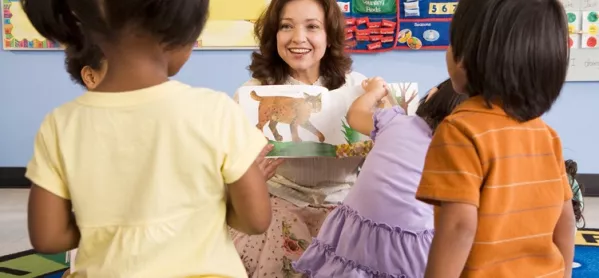How would you define an “enabling environment”?
The EYFS Development Matters document from Early Education (2012) talks about valuing others, stimulating resources and rich learning opportunities.
A quick internet search will show you the wonderful ways this has been interpreted, with some fantastic-looking environments. What is often over-looked, though, is that the very best resource you have as a teacher in early years is yourself.
Interactions are crucial
How you use yourself by having meaningful interactions with children will determine how much impact the environment has on a child’s progress. Playing, challenging, questioning and, my favourite, “wondering” with children will lead to far more exploring, motivation and critical thinking, and in some cases greater depth.
And this can be done just as well with a pile of cardboard boxes as it can with the most expensive equipment.
The interactions you have with children will help you to develop an understanding of children’s interests, their motivations, their schemas (discussed here via PACEY) and, importantly, their next steps.
Building relationships
This information in turn helps you plan your environment further to meet their needs.
This is what a truly enabling environment should look like. It can then lead to some very meaningful pupil progress conversations, such as how you adapt your environment, and the experiences you provide can often remove barriers to learning, including SEND, disadvantaged children or EAL. Having an awareness of what motivates children intrinsically can be very powerful to aiding rapid progress, too.
So how can teachers best build enabling environments?
1. Dialogue
Talk to children about what they are doing. Don’t ever assume you always know what they are playing just through observation. A child once talked about a photo and it turned out they were doing something completely different to what I had written. I had missed an opportunity to provide further opportunities in the environment.
2. Choose plenty of open ended provocations
Even with the most structured activities, when accessed independently children will rarely do with them what we as adults intended. Don’t stifle their creativity.
3. Provide experiences
Especially if you work with a high number of disadvantaged pupils. Experiences give a reason to talk.
4. Think about purpose
Why have you put sparkly numbers in the sand? What are you hoping they learn from that? Are there opportunities for a variety of skills to be developed?
5. Spend equal time planning your indoor and outdoor learning.
Outdoors should not be an add-on.
Nicky Clements is head of EYFS at Victoria Academies Trust. She tweets @nickyclements71





